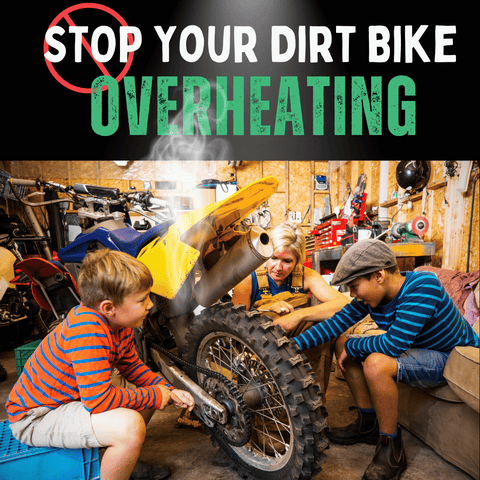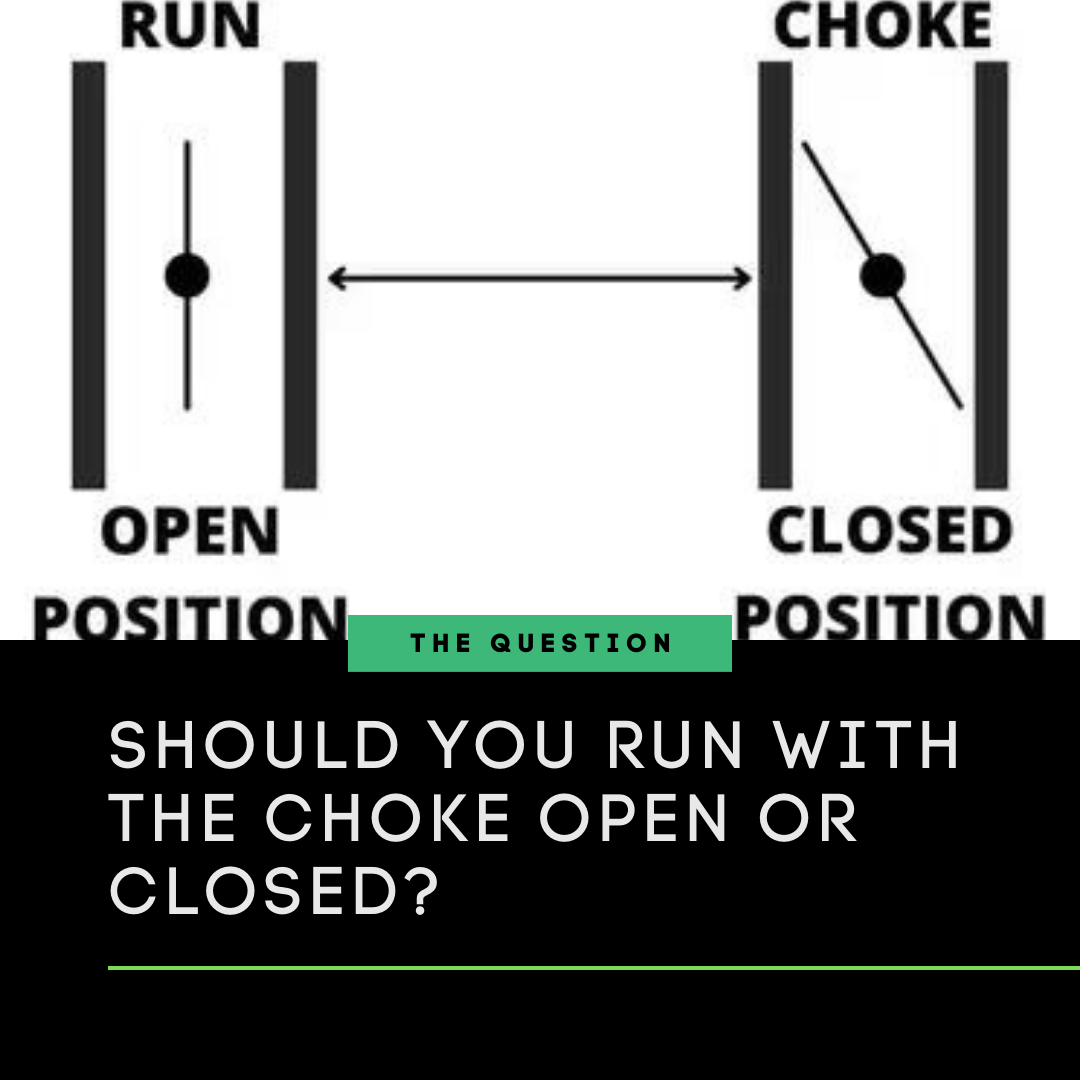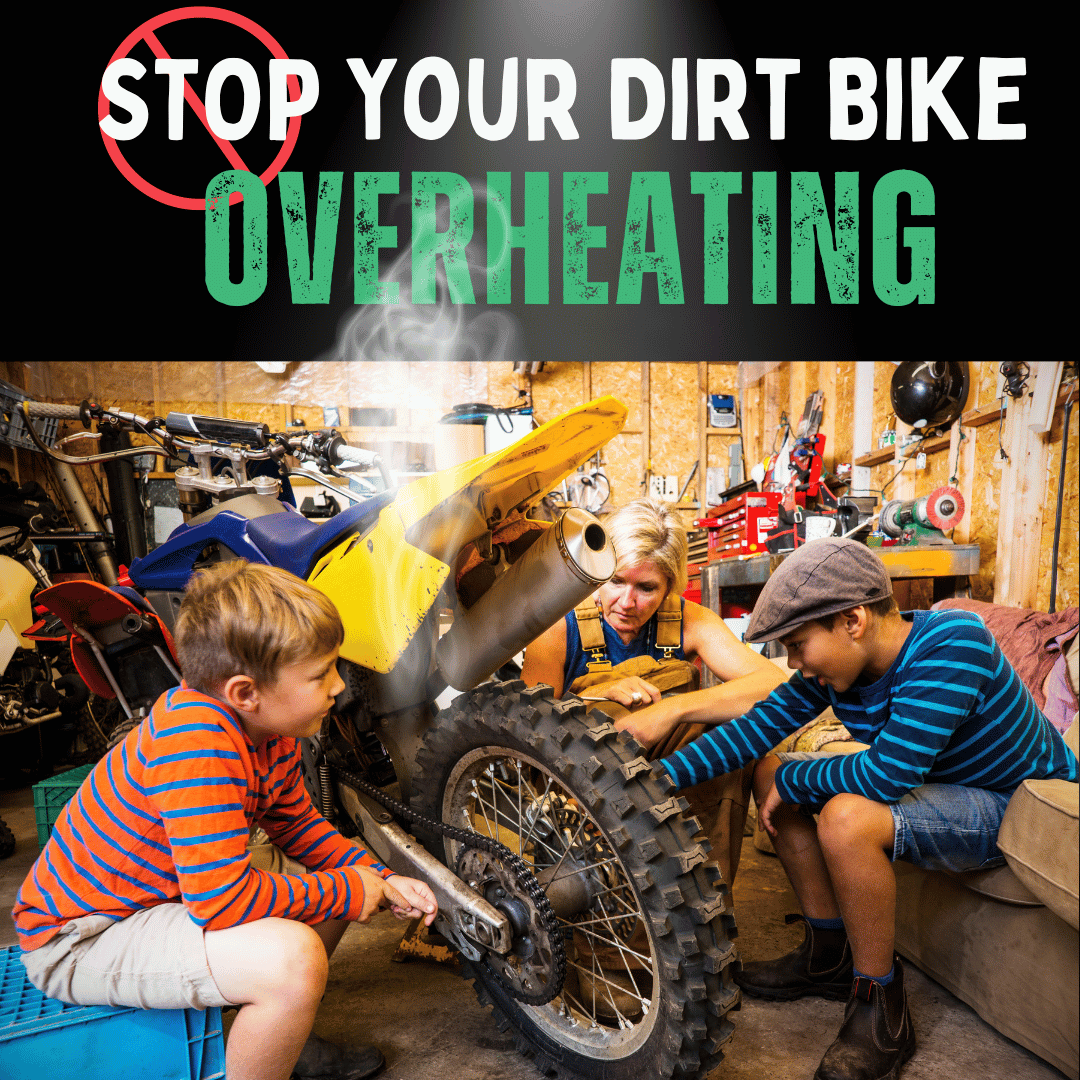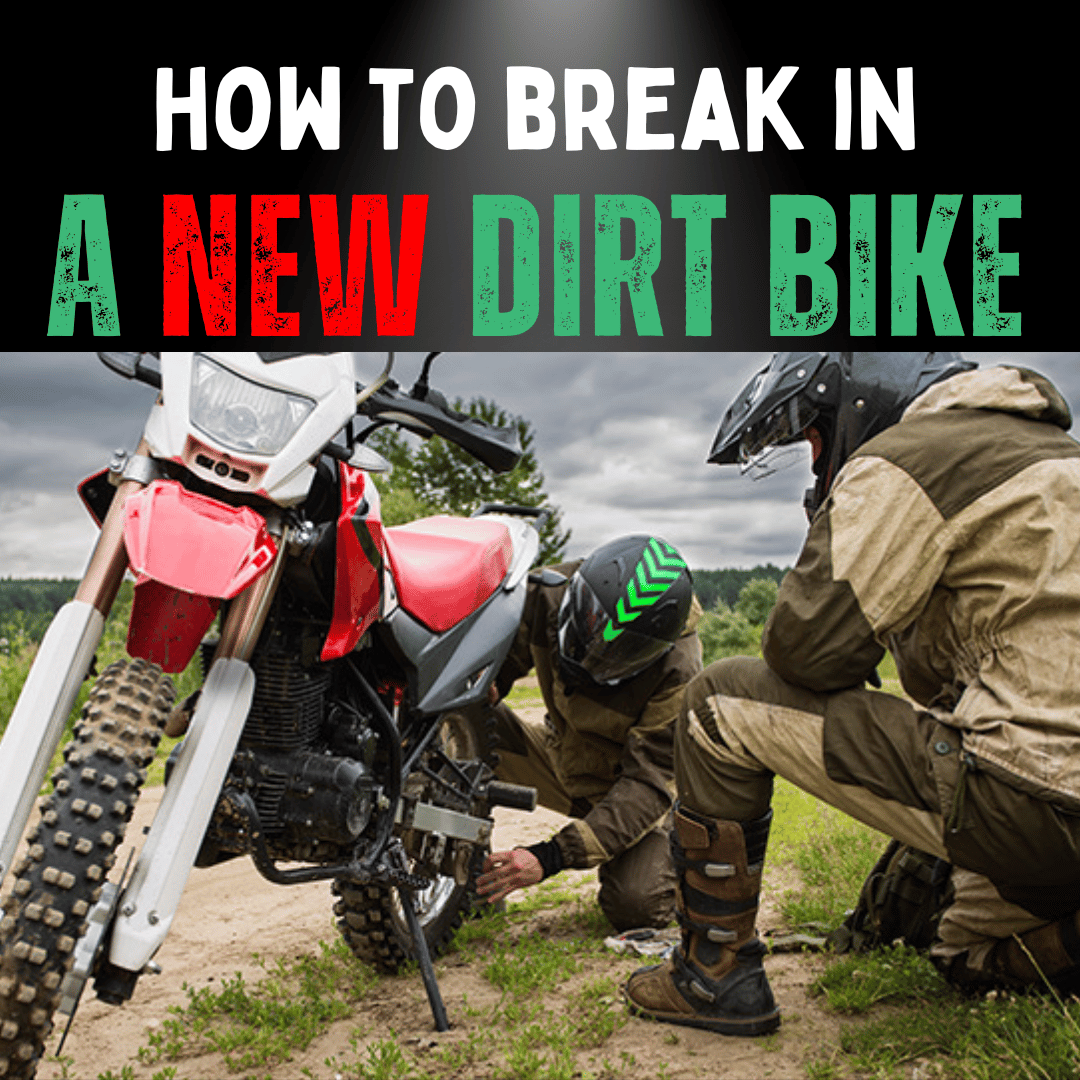
Updated: 25.4.25
Have you ever been on an epic ride, feeling the wind in your hair and the thrill of adventure in your veins, only to have your dirt bike overheat and kill the vibe?
It's more than just a mood-breaker; it's a safety hazard that could cost you big in repairs.
Lucky for you, this isn't an unsolvable problem. In this guide, we’ll break down the most common bike engine overheating problems and show you how to stop your dirt bike from overheating.
How To Keep Your Dirt Bike From Overheating
Proper coolant management and regular maintenance are critical. Most dirt bike overheating issues stem from low coolant or a compromised cooling system. Always check your radiator before each ride to avoid costly repairs.
1. Why Is My Dirt Bike Overheating?
If you've ever thought, "Why is my dirt bike overheating?", you're not alone. Overheating is a common issue that affects both casual and motocross riders. Causes include low coolant levels, clogged radiators, broken fans, or pushing your bike too hard in extreme terrain.
2. Importance of Coolant Management
- 2.1 Check Coolant/Water Mix Before Rides: This ensures your dirt bike cooling system stays regulated.
- 2.2 Use High-Quality Coolant for Dirt Bikes: Don’t use automotive coolant—use one made for motorcycles.
- 2.3 Regular Coolant Level Checks: Prevents overheating during long or aggressive rides.
- 2.4 Replace Coolant Periodically: Do this every 12–18 months. Related: Should You Run With The Choke Open Or Closed?

3. Radiator Maintenance
- 3.1 Inspect the Radiator Cap: A weak seal can cause pressure loss and overheating.
- 3.2 Replace Damaged Caps: Swap it out if it's cracked or doesn’t fit tightly.
- 3.3 Clean Your Radiator: Mud and debris can block airflow in the dirt bike cooling system.
4. Pump and Thermostat Checks
- 4.1 Inspect the Water Pump: Look for leaks and impeller wear.
- 4.2 Test the Thermostat: A stuck thermostat leads to bike engine overheating.
5. Hoses and Connections
- 5.1 Check Radiator Hoses: Cracks, bulges, or leaks are signs you need replacements.
- 5.2 Replace Worn-Out Hoses: Don’t wait for a burst—stay ahead of the problem.
6. Jetting and Oil Considerations
- 6.1 Adjust Jetting: Avoid running lean—this leads to 2 stroke engine overheating.
- 6.2 Use the Right Oil: High-performance synthetic oils help with motorcycle overheating prevention.
7. Additional Tips
- 7.1 Add a Fan Kit: Especially helpful in motocross and off-road conditions.
- 7.2 Avoid Harsh Terrain: Swampy or sandy conditions overwork your engine.
- 7.3 Change Oil and Filter: Old oil increases friction, leading to overheating.
- 7.4 Use Radiator Guards: Blocks rocks and debris, improving airflow. Related: Signs of a Dirty Engine Air Filter
8. Recognizing Overheating Symptoms
If you're wondering about motorcycle overheating symptoms, look for steam, boiling coolant, strange noises, and a sudden loss of power.
9. What to Do If Your Motorcycle Overheats
- 9.1 Stop Immediately: Kill the engine, don’t open the radiator cap while hot.
- 9.2 Let It Cool: Then inspect coolant, radiator, and hoses before restarting.
10. Choosing the Right Engine: 2-Stroke vs 4-Stroke
Many ask whether 2 stroke engine overheating is more common. In short—yes. They run hotter than 4-strokes, so keep a close eye on temps.
11. When to Replace Engine Seals
Leaks from gaskets and seals are a silent but common bike overheating problem. Catch and replace them early to prevent internal damage.
Conclusion
Whether you ride a 2-stroke or 4-stroke, preventing motorcycle overheat issues starts with proactive care. Stick to these 18 proven methods and ride with confidence!
Frequently Asked Questions
Why is my motorcycle overheating?
Low coolant, a blocked radiator, or worn-out seals are often the cause. Regular inspections can prevent it.
What coolant is best for motocross bikes?
Use high-performance motorcycle-specific coolants designed for off-road and motocross conditions.
How can I fix a bike engine overheating problem fast?
Shut the engine down, check coolant, clean the radiator, and replace damaged hoses or seals if needed.
Can 2 stroke engines overheat more than 4 stroke?
Yes. 2-strokes generally run hotter and need more frequent maintenance to avoid overheating.
What should I do if my dirt bike overheats on a trail?
Pull over, turn off the engine, let it cool completely, and inspect for leaks or steam before continuing.
Get in Touch
Loved learning how to stop your dirt bike from overheating? Dive into more at RiiRoo.com or chat with us on Live Chat!







Share:
How to Install Dirt Bike Grips - Only 4 Steps
6 Critical Ways a Dirty Air Filter DAMAGES Your MotorBike's Engine